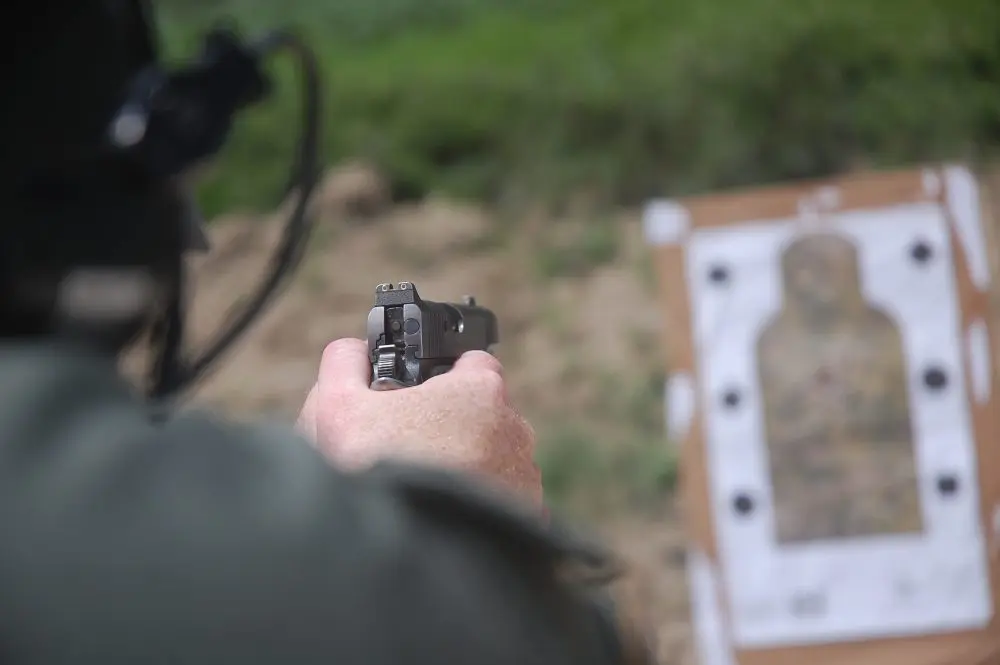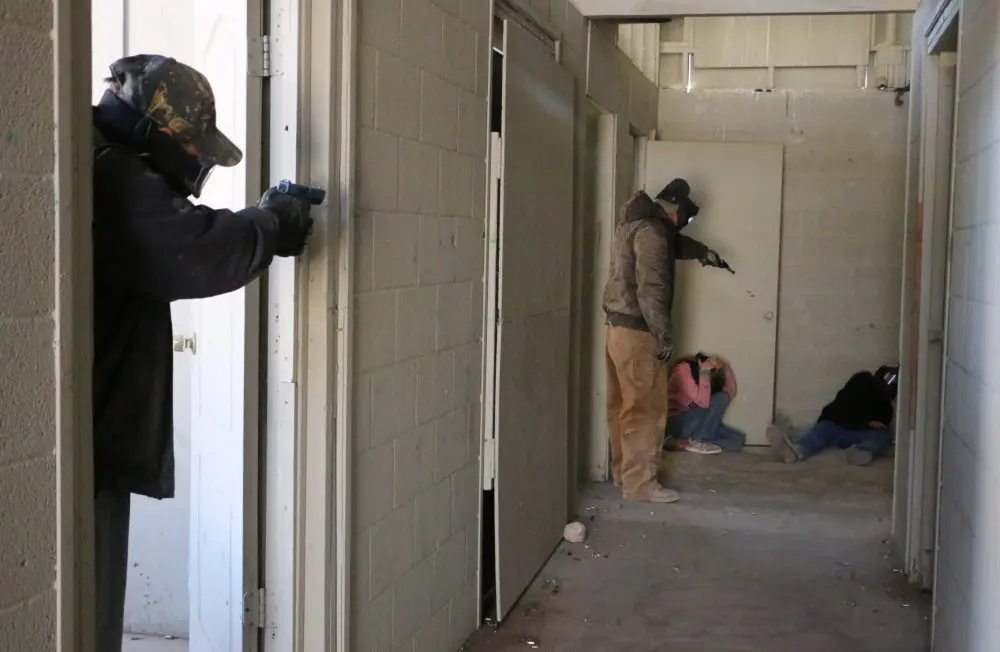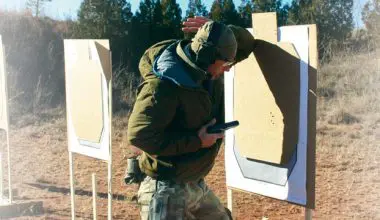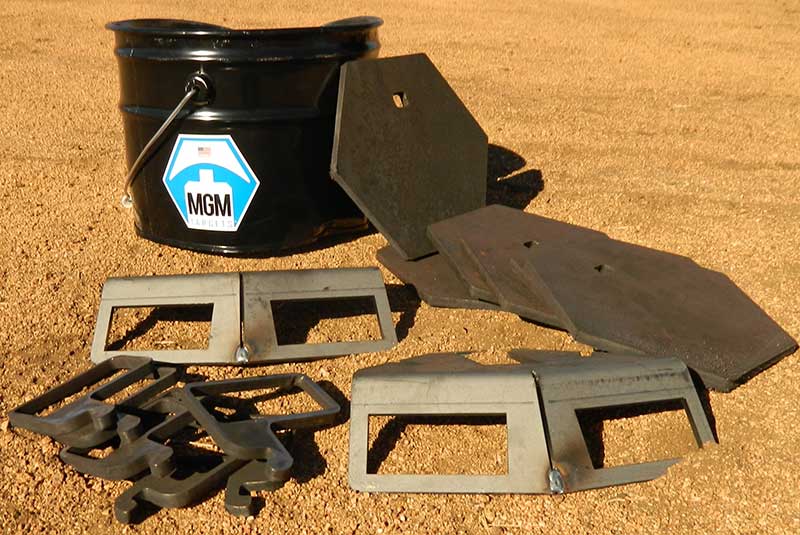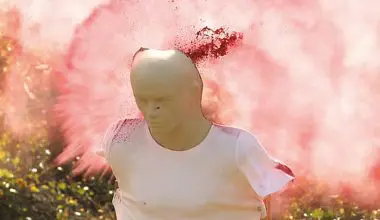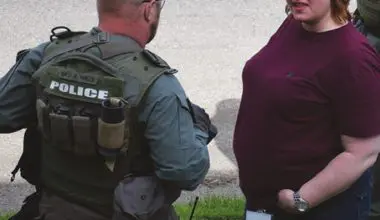Two things came out of the Sandy Hook school shooting in Connecticut, in which 20 elementary students and six school staffers died. One was to be expected: more useless gun control laws in states like Connecticut, New York and Colorado. The other was that many school boards and administrators learned it is better to have armed staff in the schools than wait for police response.
In Ohio, more than 30 school districts now have armed teachers and school staff to protect their students. Much of this is due to a collaboration between John Benner’s Tactical Defense Institute (TDI) and the Buckeye Firearms Association (BFA), a group that lobbies the Ohio Legislature for improvements in gun laws. BFA has a foundation that pays the tuition and lodging for the school staff.
“It’s really come a long way in a short time,” Benner said. BFA president Jim Irvine, an American Airlines pilot, lobbies school boards and superintendents to arm those teachers and school staff who want to be armed. Irvine said security cameras, single-point entries and lock-down drills may be helpful, “but none of that will stop the killer walking down the hallway about to slaughter a whole room full of kids, and everybody knows it.”
Table of Contents
FASTER
I drove up to TDI at the end of March to monitor the course, which is named FASTER for obvious reasons. Benner is an avuncular man in his 60s who usually has a cigar clamped between his teeth. He is a Vietnam veteran and for 20 years commanded the Hamilton County, Ohio multi-jurisdictional SWAT team. TDI is located on 186 acres in the wooded hills of southern Ohio.
The course began in the classroom, which was good as it was snowing intermittently. There were 20 men and four women students, all school staff from mostly rural school districts—teachers, counselors, and administrators. The eight instructors were mostly active or retired law enforcement, but also included Deborah Fletcher, an economics professor at an Ohio university, and Irvine of BFA.
Benner outlined the history of mass killings in the U.S. and how law enforcement responses have changed. In recounting the mass killings, Benner refused to use the killers’ names as a way of denying them any recognition.
ACTIVE KILLERS
Police use the term “active shooters” to describe the perpetrators of mass killings, but Benner prefers the term “active killers.” Benner said, “Anyone with a concealed carry license is an active shooter, but they are not active killers.”
Until the Columbine School shooting in Littleton, Colorado in 1999, most police departments taught their officers to set up a perimeter and wait for the SWAT team. At Columbine, the first tactical officers entered the building 45 minutes after the incident began, by which time the shooting was over and the perpetrators had shot themselves, Benner said.
On average, active killers shoot nearly five people per minute, he said. The research was done by Ron Borsch, a Vietnam veteran and retired police officer with 30 years experience. He teaches a Tactical First Responder course at the SEALE Regional Training Academy in Bedford, Ohio. As a result of his research, he has a database of more than 150 mass shooting incidents dating back to 1975.
Quoting Borsch, Benner said that 75% of the time, active killers are taken down by civilians. He said that 98% act alone, 75% have more than one gun, and 35% commit suicide at the scene of their killings. Even if the police response is three minutes, it means the killer has time to shoot a dozen people, so it is better to have armed people among the school staff.
TRAINING IN THE SNOW
Between snow flurries, students went outside and lined up facing a steep wooded bank, where they “roped” their guns. This consisted of unloading their semiautomatics then, with the slide locked back, pushing a piece of bright yellow flexible plastic tubing about a foot long down the barrel and through the magazine well so both ends were visible. The slide can then be dropped and manipulated.
The students trooped back into the classroom and lined the walls. Benner wanted the students to get comfortable with pointing guns at other people. Benner had them do just that. “Pick someone and shoot them.”
Benner justified it this way: “The reason we do that is because people are trained not to point a gun at anybody, and the bottom line is they may fail in a force-on-force situation if they have never done that.”
John Motil, a gunsmith and one of the instructors, taught the students a proper two-handed grip and trigger control, and discussed handgun sights.
The snow stopped around lunchtime, though the temperature remained in the low 30s. After lunch, students started on the range and spent most of the afternoon shooting. Retired police chief Chris Wallace demonstrated three methods of drawing from under a cover garment. He showed clearing the coat with the thumb, sweeping the coat aside, and lifting the shirt. The students fired on targets using the garment clearing methods to find which worked best for them.
The students spent most of the second day shooting on the range—learning to shoot on the move, while weaving among other people (represented by large traffic cones), and shooting around barricades. Later they moved to two live-fire houses, where they had to find and neutralize the killer target.
Benner emphasized that students have to practice what they have learned or they will lose the skills. “You’re going to have to have good habits, especially in the environment that you’re in. Folks, you guys are pioneers at this. If we have a problem in any of the schools, if we have a problem with people making mistakes, in firing extra rounds or hitting somebody that doesn’t need to be hit, guess what? This program’s going to go to hell. So you guys have to make it work. It’s really up to you to do that.”
After a break for dinner, students returned to the classroom for a session on emergency medical treatment taught by Cameron McElroy, a professional firefighter and paramedic.
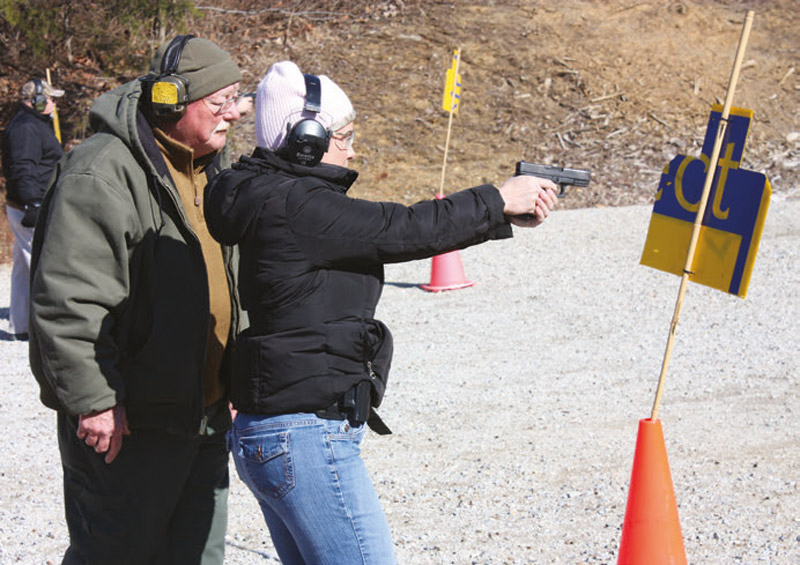
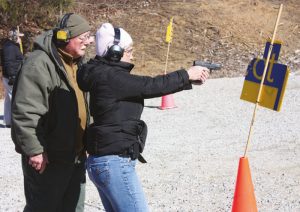
FORCE-ON-FORCE TRAINING
On the final day, the class split into two groups. One group went to the force-onforce house—a two-story building used for indoor scenarios with Airsoft guns. I went with the other group to the upper range, where a school corridor had been built out of sheets of plywood. Students negotiated several scenarios with their guns “roped.” Before they started, Benner gave them some words of advice:
“If an innocent person is hiding somewhere, that’s not your problem. You have to make that assessment real quick and blow right by them. You may see bodies, blood trails, trails of bullet casings. Things of that nature may lead you to where you need to go.”
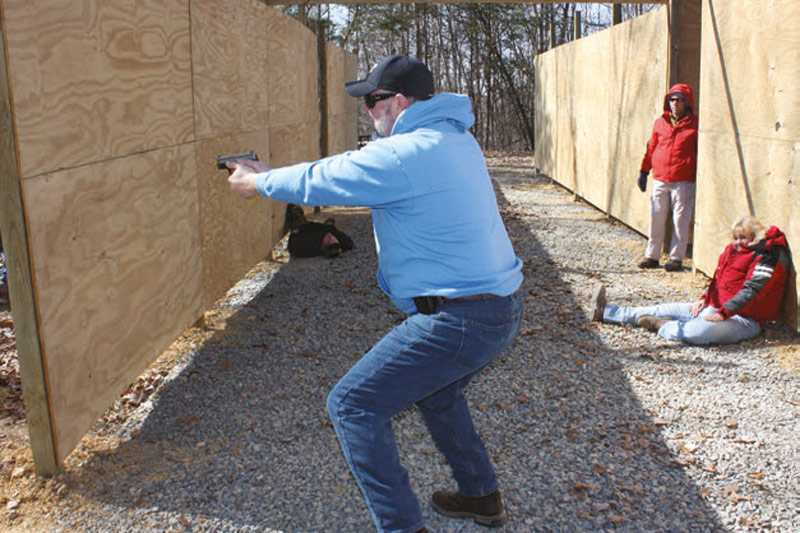
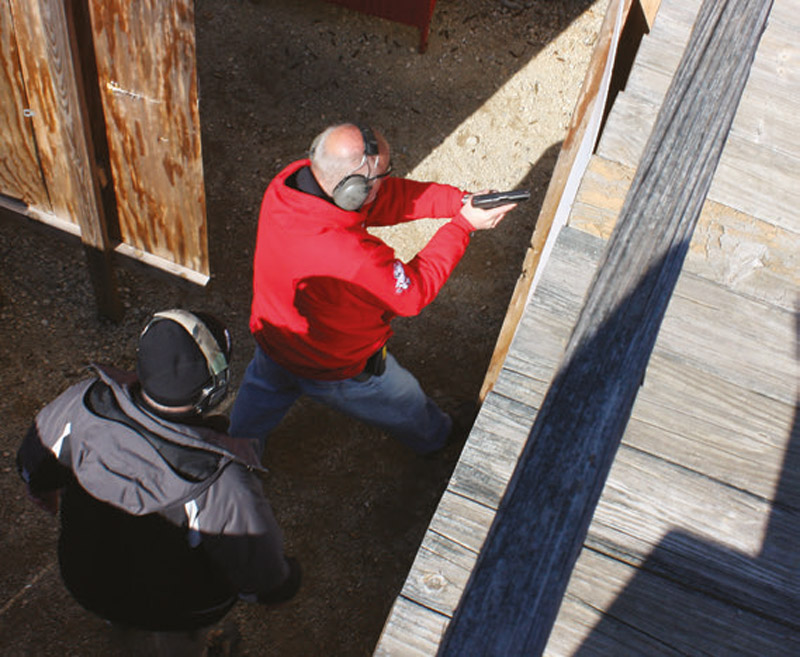
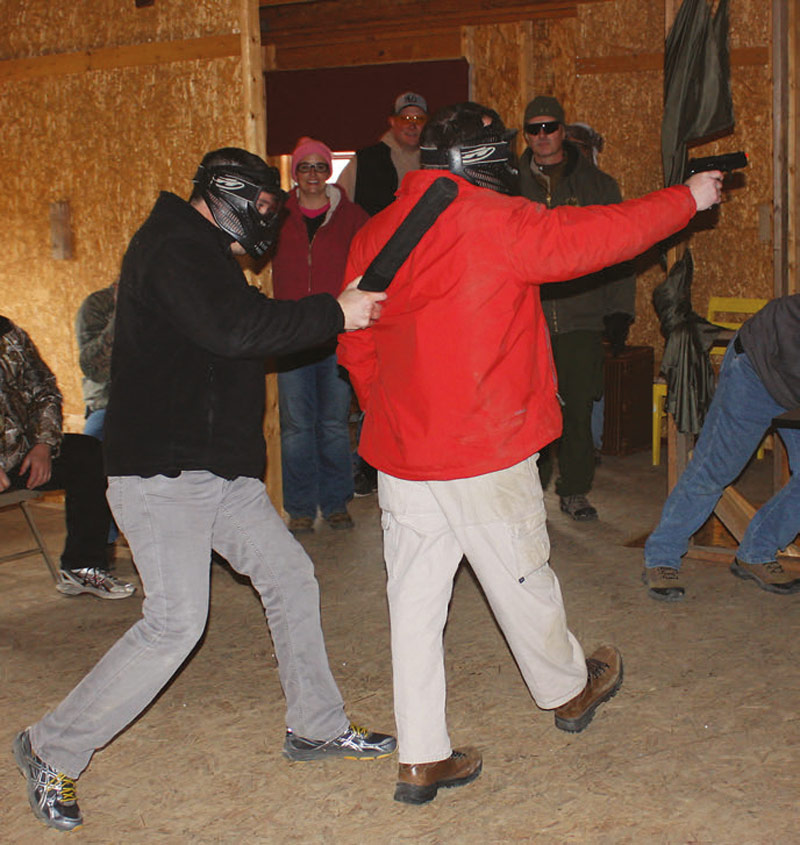
Instructor Forrest Sonewald debriefed students at the end of each scenario and also provided advice. “Never kick the gun away from the killer, as the gun may go off. You don’t know the condition of his gun. It may be safer to keep him covered rather than disarm him. Be aware that the killer may have other guns, but don’t search him for them.”
If the staffer still has a gun on the bad guy when police arrive, have a student or staff member stand behind the staffer with his hands up and explain that the shooter is down and the staffer is covering him. If no one is available, holster your gun but keep an eye on the downed killer.
After lunch, the same group went back to the school corridor. This time students wore face masks and used Airsoft guns, which shoot plastic BBs. Scenarios tested the students’ reactions to a killer in a classroom gunning down kids, a killer who has given up and is standing with his hands up and his gun on the floor, and a killer who has just committed suicide in a room full of kids.
WORDS OF WISDOM
As Sonewald debriefed each student after each scenario, he asked them to justify the actions they had taken. “I can’t tell you what to do. This scenario stuff is the culmination of everything we’ve practiced up to this point—the weapons handling, the use of space, cutting wide on things. You’ve got to make a decision based on individual circumstances: whether or not you enter a room, if you are already in the room like some of the scenarios, whether or not you set up an ambush or go hunting for the individual. And there are always the afterthoughts: do we secure the firearm, do we direct people out, who do we designate to stay with us with their hands up and say we have an armed teacher covering a downed suspect?”
Benner added: “Think about this too, folks. If you are involved in a situation, do the best you can. That’s all anybody can ask.”
The group moved to the force-onforce house to participate in more scenarios. These included an unarmed principal attacking the killer with a simulated baseball bat. Irvine played the part of the active killer and was taken down—quite aggressively—several times.
QUAL COURSE
The two groups assembled back at the range for their last challenge—the Ohio peace officers’ firearms qualification course. After shooting, one young woman proudly said she had scored 27 out of 28 and “that’s better than my husband, and he’s in law enforcement.”
Benner is willing to share his program with other instructors in Ohio as well as other states. “If they want us to share information with them, we are happy to do that, to the point that we’ll give them the PowerPoint lesson plan, everything. And we urge other instructors to come down here.”
